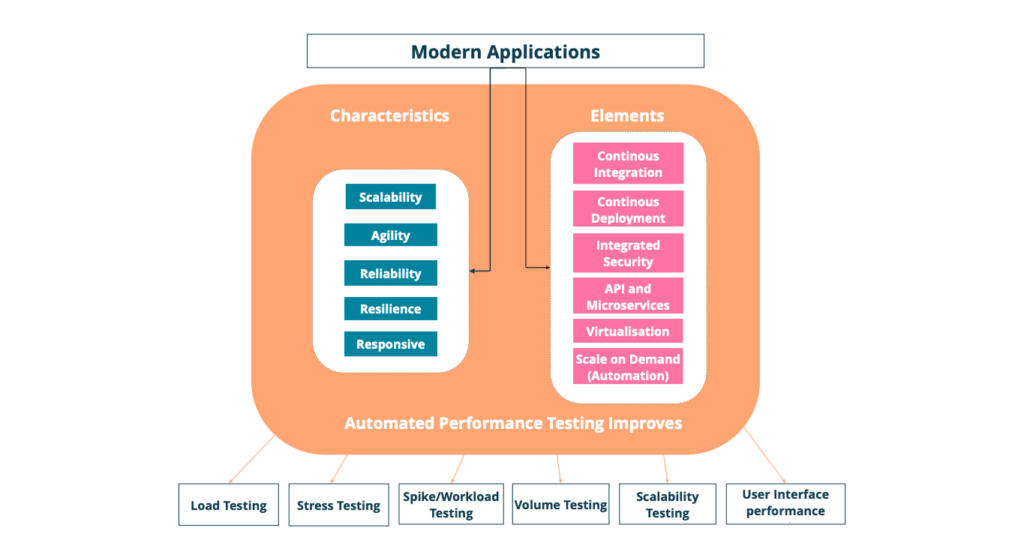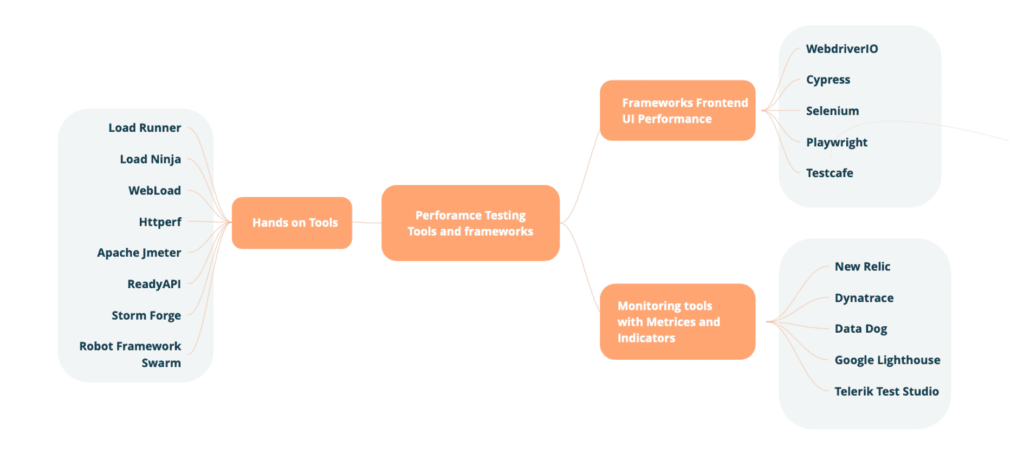Understanding Agile performance testing and why you should do it
Today, more and more modern software applications are being developed as Software as a Service (SAAS) offerings. We observe that one endeavor is particularly important: to provide the user with a gratifying end-user experience.
To create a modern software application, it needs to have high properties of scalability, stability, reliability, and of course, responsiveness. While interacting with the application, the end-user expects a quick response with no friction points.
This is where performance testing techniques can be used to evaluate the above-mentioned application properties. Therefore, helping to come up with user-centric solutions and possibly helping in providing the end-user with a great user experience.
Performance testing is part of the non-functional testing methods, and it helps Development/IT teams to measure the information on the application’s speed, request and response time, network bandwidth & memory consumption, and possible number of concurrent users the application can handle.

Why is test automation a tool for performance testing?
In modern software development, performance testing should never be neglected. As the demand for highly customizable applications is growing, changing a piece of code in one place can lead to affecting the performance of the entire application and will finally result in affecting the end-user experience.
Comprehending the way of development of modern software solutions, the below abstract list of reasons helps us to identify the rising need of performance testing in today’s software solutions as:
- They are based in microservices architecture or a mix of micro and monolithic architecture with day-to-day integrations taking place
- Using modern frontend & backend frameworks, which are updated regularly
- Continuous integration and deployment
- Follow agile methodologies
Performance Engineering to the Rescue
Performance engineering is the to-go-to solution for modern products, wherein we enable development teams to integrate performance testing during the feature development and feature-releasing process.
To work with the continuous integration and deployment (CI/CD) model, which involves ensuring continuous quality and excellent user experience, the performance testing needs to be automated because doing the performance testing manually can lead to high costs, less resource availability, and loosing go to market and various other business objectives.
Nowadays, there are various open-source tools and services available which are helping to make performance testing within the development phase easier to do.
Types of performance testing
There are various types of performance testing techniques that can be used to analyse the performance of the application. Some of them are:
Load testing: The load is put upon the application, with multiple users accessing the application simultaneously.
Helps with: Determining the capacity at which an application can operate with its present infrastructure and the total concurrent users an application can support.
Stress testing: Verifies the application’s reliability and stability when conditions are unfavourable (heavy load beyond normal operating points).
Helps with: Knowing the application’s robustness and error handling mechanisms by evaluating places where the hardware breaks.
Soak or endurance testing: The load is held over an application for a longer time.
Helps with: Evaluating the situations of memory leaks and utilisation.
Spike or workload testing: The traffic on the application suddenly bursts.
Helps with: Evaluating the application’s performance during the sudden burst, which allows knowing the current code performance and infrastructure capability.
Volume testing: Usually testing databases’ accesses when a large number of requests are sent to the database with a huge amount of data.
Helps with: Evaluating the database and transaction performances.
Scalability testing: We test the system’s scalability by running a series of stress tests with steadily increasing resources with each stress test.
Helps with: Knowing how effectively a system can grow with increased resources.
Frontend or UI performance testing: With CSS and JavaScript, much rendering is now happening on the client side, hence making front-end performance testing an essential aspect of the application. We test the performance by looking into various front-end parameters. For example, web elements load time, page load time, and more. We can also compare it across different browsers and devices.
Helps with: Evaluating the front-end performance and making the engineering teams know the things to take care on client-side rendering and server-side rendering, and things that affect the performance.
Tools you could use for performance testing:
Below is the representation of some performance testing tools to help you increase the test coverage while reducing testing time.
These tools are, in part, capable of:
- Create scriptless load tests and get browser-based metrics.
- Easy debugging of the application’s performance
- Client-side interaction capturing
- Pinpointing the issues and bottlenecks in achieving load and response needs
- Cloud infrastructure available to generate loads
- Testing in real browsers
- Writing or modifying the scripts with preferred programming languages
- Monitoring the application’s performance and providing us with KPIs

Hands-on tools: Load Runner, Load Ninja, Web Load, Httpref, Apache Jmeter, ReadyAPI, Storm Forge, Robert Framework Swarm.
Monitoring Tools with Metrics and Indicators: New Relic, Dynatrace, Data Dog, Google Lighthouse, Telerik Test Studio
Frameworks frontend UI Performance: WebdriverIO, Cypress, Selenium, Playwright
Accelerate the development of your digital solution with Gofore
We help you set up and rapidly roll out your performance-testing solutions at the organizational level—either by leveraging a commercially available solution or a home-grown solution. Evolve and improve your product performance and the efficiency of your product development teams within your overall organization.



